cptbob
Well-known member
Long before I got into collecting Imperial German militaria I was an avid student of military history and read quite a bit about Wellington's Peninsular Campaign and the exploits of the Kings German Legion (KGL) in that campaign(expat Germans that fled the Napoleonic occupation and joined the British army to fight for the Elector of Hannover who was also the King of England). I was thrilled to discover that several Hannoverian cavalry units (including the 13th Uhlan) could trace their roots to the various KGL cavalry units.
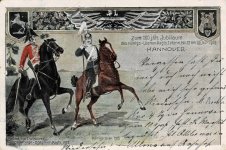
A couple years ago I stumbled across this and couldn't resist. This document is for an Uhlan in the 2nd Royal British Hannoverian Uhlan Regiment. The document is dated 1827 and it appears the individual had served for 10 years. That would have been about 2 years after Waterloo and this unit is likely connected to the KGL. The wax seal show the crest of Hannover (nearby Braunschweig also has the leaping horse in its crest).
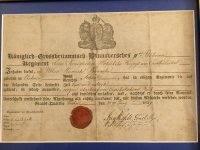
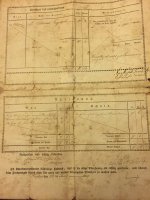
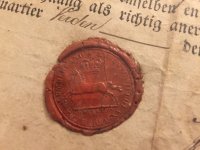
Many of the Hannoverian and Braunschweig units bear battle honors from service in the KGL. The most interesting of these is the engagement at Garzia Hernandez in which the 1st and 2nd KGL Dragoons single-handedly broke and routed 3 French infantry squares. This was a rare feat for the time and became the talk of Wellington's army.
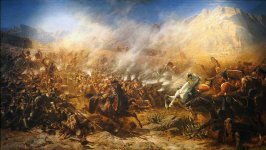

A couple years ago I stumbled across this and couldn't resist. This document is for an Uhlan in the 2nd Royal British Hannoverian Uhlan Regiment. The document is dated 1827 and it appears the individual had served for 10 years. That would have been about 2 years after Waterloo and this unit is likely connected to the KGL. The wax seal show the crest of Hannover (nearby Braunschweig also has the leaping horse in its crest).



Many of the Hannoverian and Braunschweig units bear battle honors from service in the KGL. The most interesting of these is the engagement at Garzia Hernandez in which the 1st and 2nd KGL Dragoons single-handedly broke and routed 3 French infantry squares. This was a rare feat for the time and became the talk of Wellington's army.

